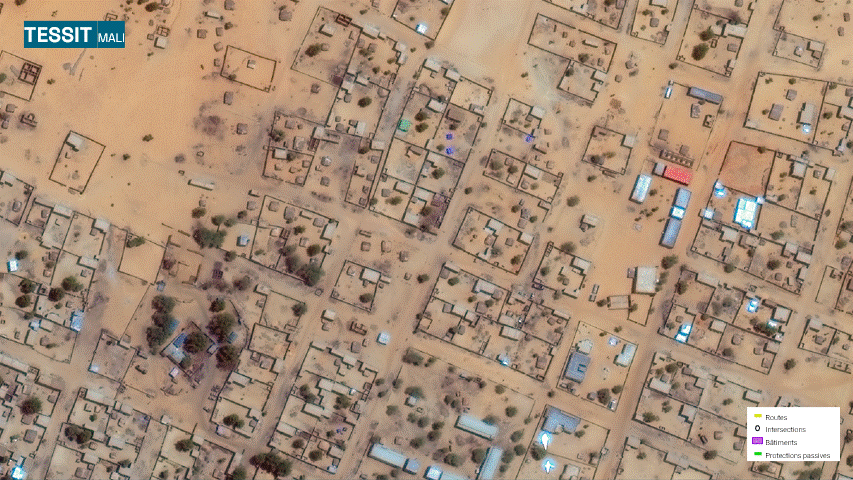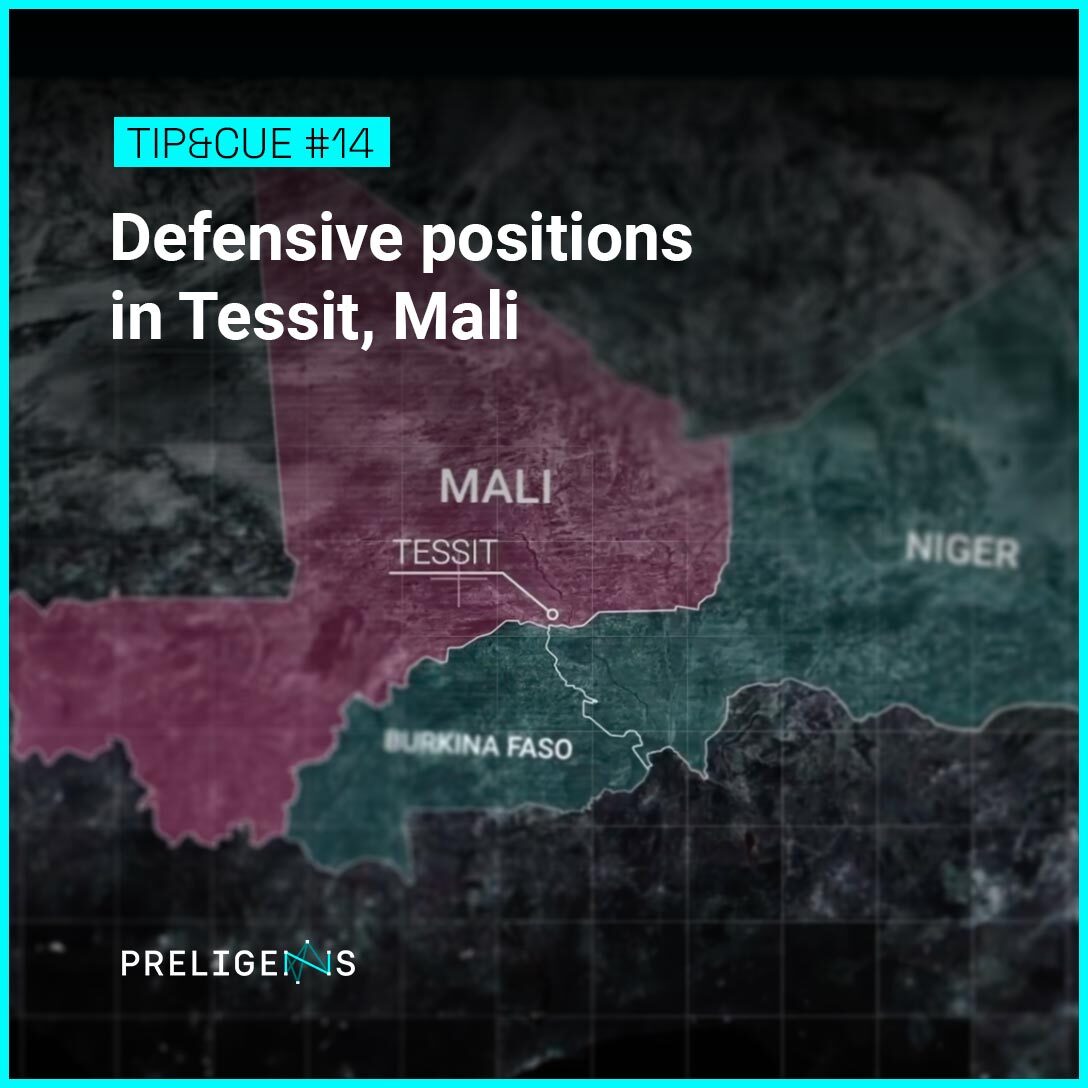Barriers: A new detector made available to our customers in 6 weeks thanks to our AI Factory

Tessit. This name may not mean anything to you, but it is a city in Africa, located in the known region called the Three borders, between Mali, Burkina Faso and Niger. An area with a complicated geopolitical context, with two particularly active jihadist groups on site vying for control. It is therefore essential to follow the evolution of this strategic zone and understand its functioning, in order to be able to plan an intervention under the best possible conditions if necessary.
Among the tools they use, the armed forces can rely in particular on one of our artificial intelligence solutions using very high resolution (VHR) optical satellite imagery, to automatically detect and vectorize terrain. Initially combining two detectors for roads and buildings, our solution analyzes all areas of operation, whether urban, desert or low-density, and extracts essential data in just a few minutes.
In order to provide even more key functionalities for operational forces when preparing for their field missions, a new detector dedicated to barriers (walls and low walls) has been added to this AI solution. Upon receipt of the annotated images, it only took the time of a release (i.e. 6 weeks) for our teams of data scientists to create and deliver a first operational version of this new detector - while the average production time of an AI project more often approaches 8 months. A look back at the main stages in the creation of a new detector at Preligens.
Industrialization, controlled value chain and business experts
To provide operational and high-performance detectors as quickly as possible to analysts in the world of defense and intelligence, the scaling up of algorithm creation processes is essential: it is necessary to abstract as much as possible each of the steps of creation and imagine the tools that will make data scientists more efficient and faster.
It is precisely this industrialized vision that governs the creative processes at Preligens, and allows the company to divide its production time by 4.
At the heart of the company, therefore, 3 AI teams (Research, Engineering & Production) working on the 6 main stages of development, which can be assimilated to the different workstations of an industrial production chain and integrating from A to Z the value chain.
- Obtain consistent and annotated data
To create the most efficient algorithms possible, data scientists must be able to rely on a large and reliable database, with finely annotated, diversified data while remaining homogeneous and structured. At Preligens, this database, which to date includes nearly 18 million of annotated objects (aircraft, ships, buildings, walls, etc.), is based on the know-how of its teams of annotators and business experts from the military world.
- Prepare a relevant dataset
Once the annotated images have been retrieved, the real watchmaking work of the data scientists begins. The goal here is to create the most complete and relevant dataset possible for the future phase of machine learning, avoiding redundancy and bias. For this step, teams of data scientists can use the wide range of components and tasks from the state of the art, allowing them to easily select the most relevant data for the case encountered, pre-process them without having to GIS expertise - Geographic Information System (for example, “tiling rasters” or “pansharpening”) and then create the datasets corresponding to the end use.
- Train and try multiple models
Then comes an engineering phase, during which data scientists select the components and parameters that best serve the end use case: choice of architecture, definition of hyperparameters (“loss”, “optimizer”, etc.), increase data (“noise addition”, “resize” etc) or even a “low code” environment, everything is done to optimize performance. Several hundred training combinations are available during this key stage, which makes it possible to launch 2,000 experiments per release and per squad, compared to 50 observed before the availability of these internal tools.
- Define the relevant configuration of a detector
Once several models have been trained, Preligens data scientists identify the best combination launched, and add other components and processing tasks, such as inference, model assembly, data enrichment or even transformations of geometries, in order to optimize everything and obtain the best possible results according to the final use case.
- Package the resulting sensor for deployment
After achieving the highest possible performance, it's time for the data scientists to work with the delivery teams, and implement all the necessary components for easy deployment to the customer. At this stage, we group together all the tasks related to the encryption of the detector itself, or to its dockerization (creating virtual spaces including all the elements necessary for the proper functioning of the detector: tools, source files, etc.).
- Validate the detector before deployment
Last step and not the least before the deployment at our customer, our teams come to validate and guarantee the quality and the maintainability of the detector created. This includes running a whole series of tests, both quantitative and qualitative, or verifying that the user will have all the metrics necessary to be able to monitor performance once the detector is deployed on the system. customer information.
Once these steps have been completed, the detector is fully operational and ready to be deployed and launched on customers' proprietary installations. This industrialization of AI and this mastery of the entire value and creation chain allows Preligens to be agile and productive, and to offer releases every 6 weeks, in a dynamic of continuous improvement and Excellency.
What concrete result once this new detector has been delivered and used?
Let's go back to the example of Tessit. By using Preligens' AI detectors to analyze satellite images of the area, the operator can leave the most time-consuming actions aside and focus on his real added value: fact analysis. He obtains in a few minutes the essential information of this zone: roads, buildings and passive protections. Enough to allow him to draw up the very particular diagram of the area, to understand its activity and to locate the protection posts deployed at the entrances to the city at each cardinal point, as well as the headquarters of the area. Highly strategic information that saves valuable time when it comes time to plan a deployment of ground forces.
This specific case is the proof if it were needed that AI brings a decisive informational superiority in the preparation of the missions of the armies.
Curious to find out more about each of these 6 large workstations and their different components? Stay tuned!
